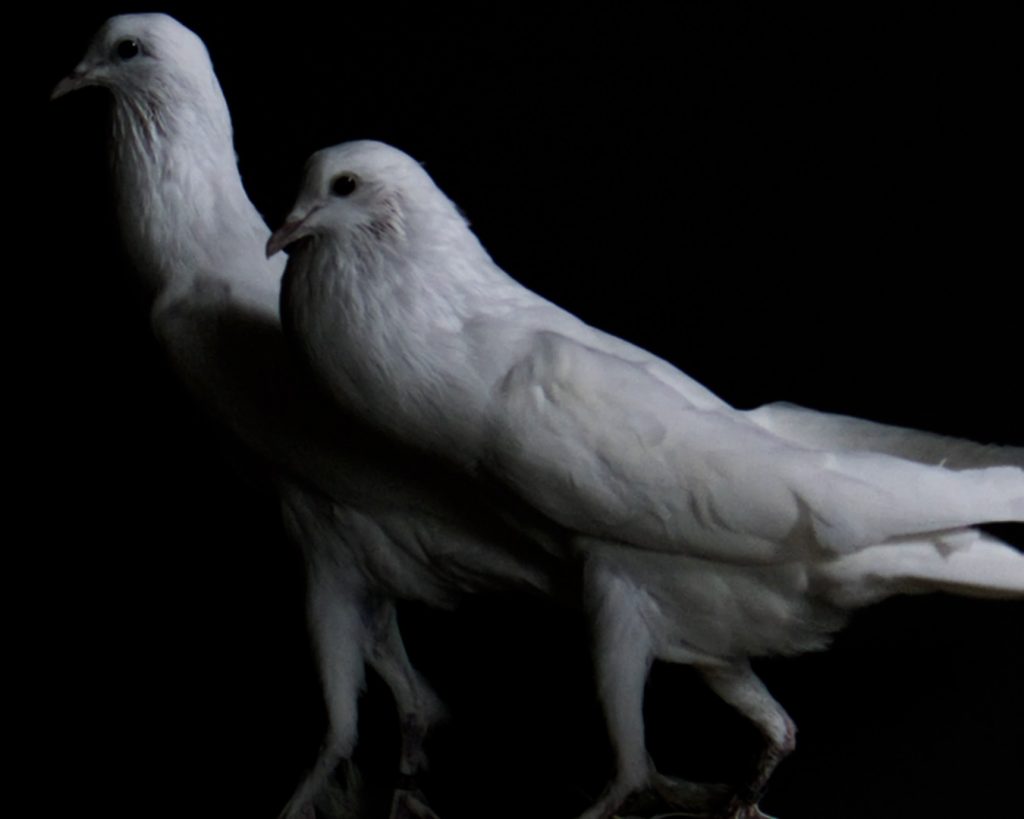
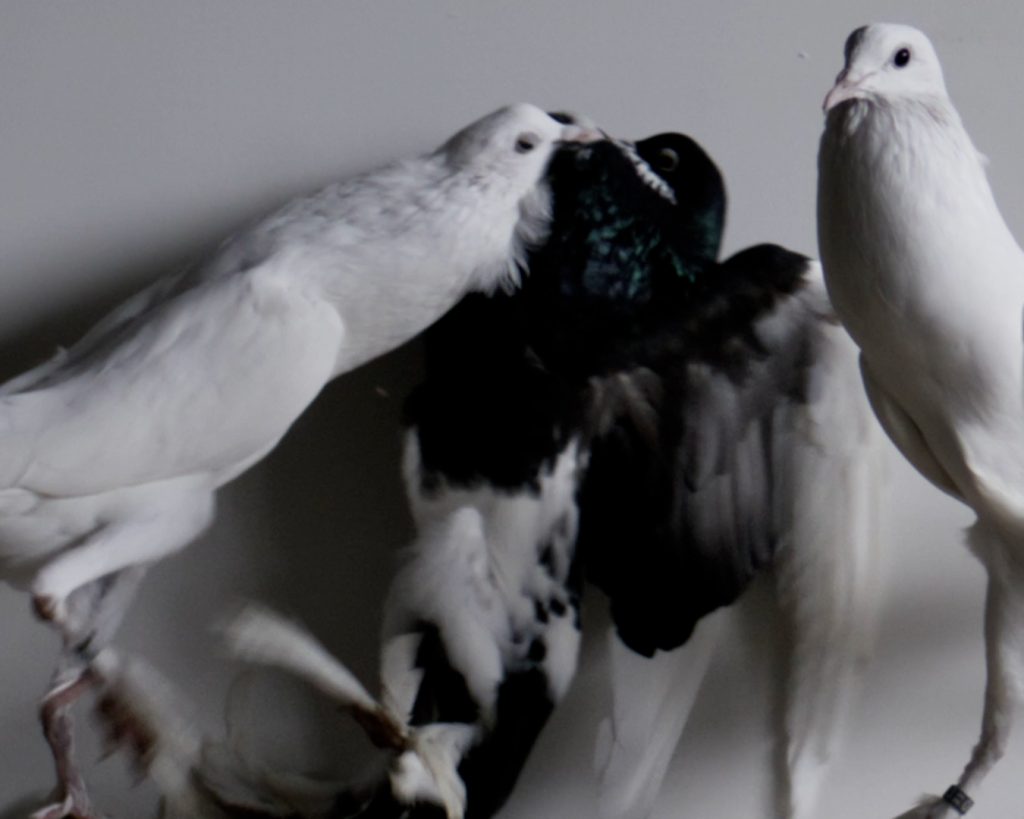
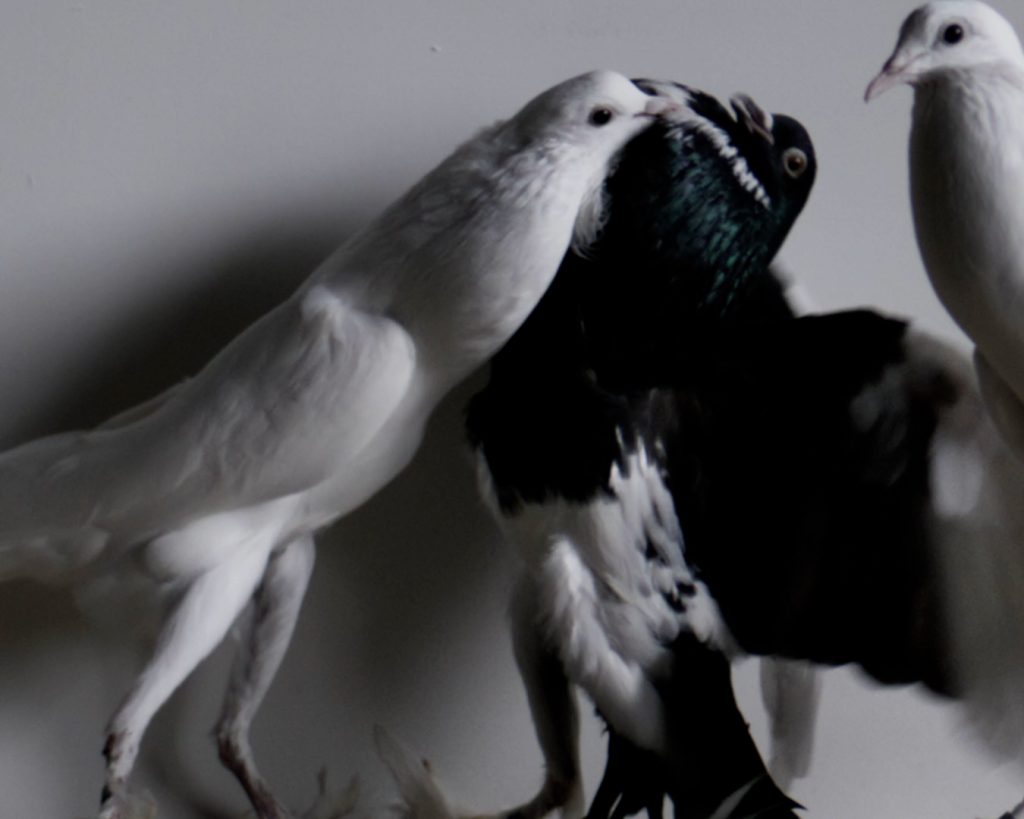
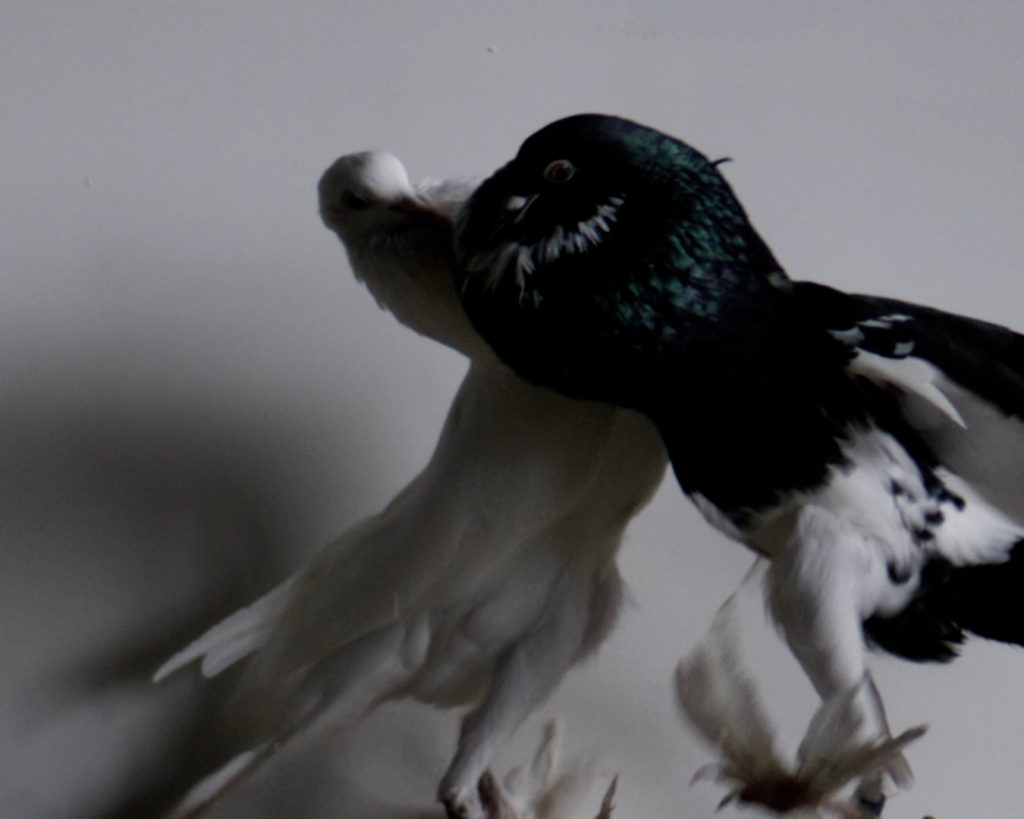
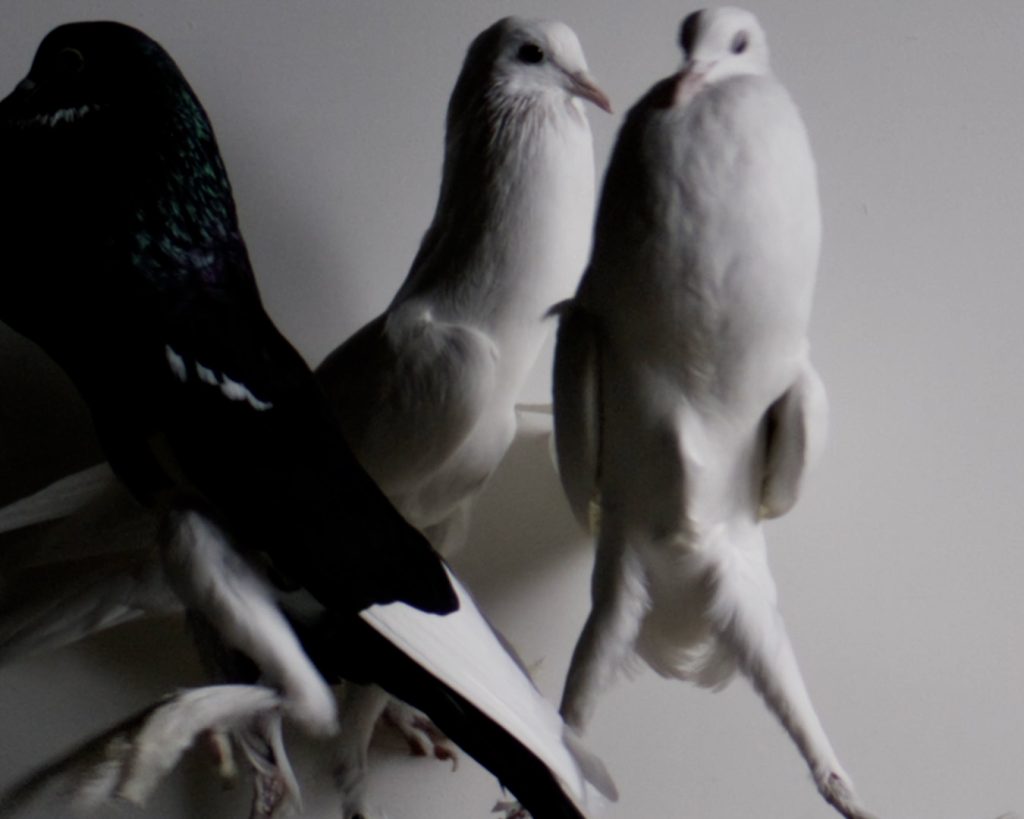
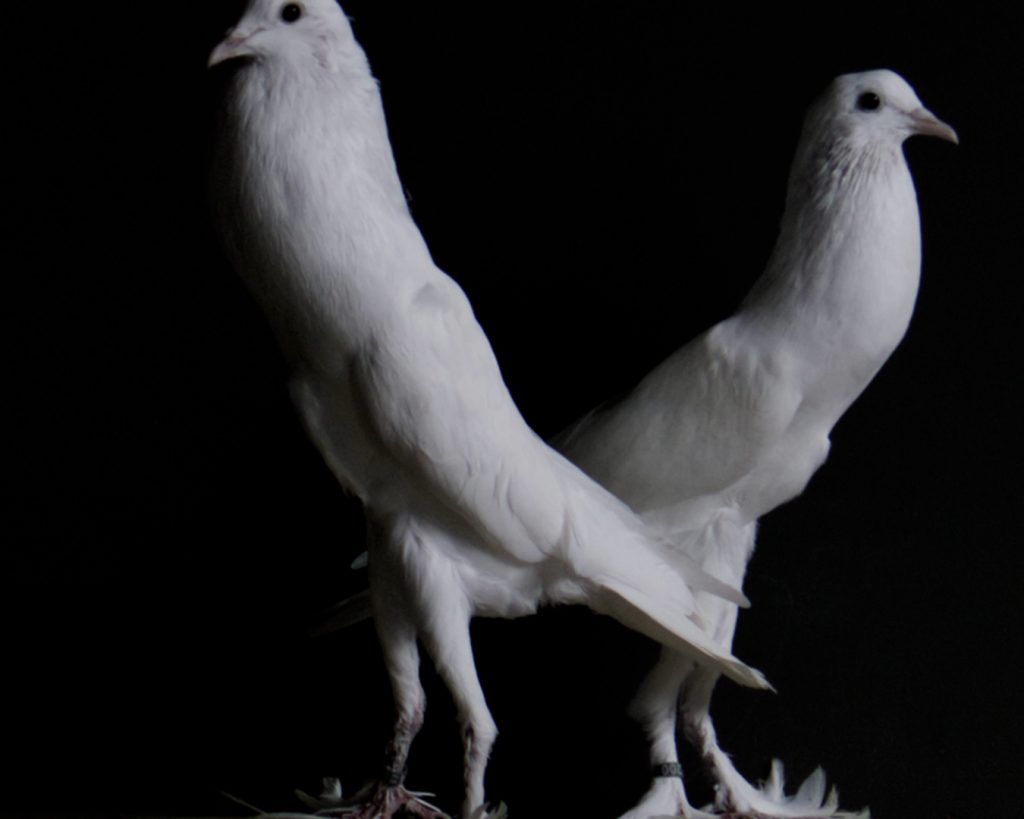
Pouters are pigeons that are distinguished from other domestic relatives by their upright posture and large inflatable crop. Their origin is disputed. The breed was first mentioned in the Netherlands in medieval times
The body shape, colors and markings of the birds are varied and one of many key arguments for their breeders. The inflation of the pouter during courtship and the flight play, especially of marked breeds, is a particular attraction for their caretakers. Pouters can become very tame and trusting.
The birds are solely bred to be enjoyed by their aesthetics. The keepers determine what corresponds to these aesthetics. Behavior, head position, posture, colors, beak and of course the crop. Even the smallest details, such as the skin color of the eyelids, are crucial. Breeding a pouter with the desired shape and color is a work in progress.
However, one very important detail should not be overlooked. There seem to be two opposing forces: the human urge to maintain the characteristics of the breed. Opposing to that, the force of nature as a limiting factor on the survivability of the animal.
Sometimes birds are unable to survive on their own as the crop becomes too big and gets in the way when pecking grains. The animals therefore have to be fed by hand.
The idea for this project came to me about three years ago. Discovering this place of opposing forces through film and feeling the ambivalence of beauty and grotesqueness at the same time, was a very fascinating and enriching experience.
The practice of sculpting living beings raises critical questions, as it touches on ethical boundaries and moral concerns. While some see it as an expression of artistic freedom, others argue that manipulating living organisms is a violation of their integrity. This controversy not only raises questions about animal and humanity, but also calls for an in-depth reflection on the artist's responsibility towards nature and life itself.





